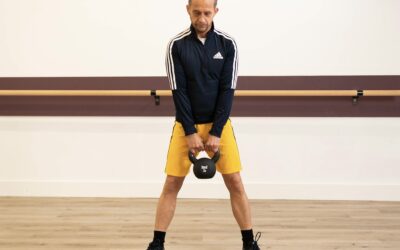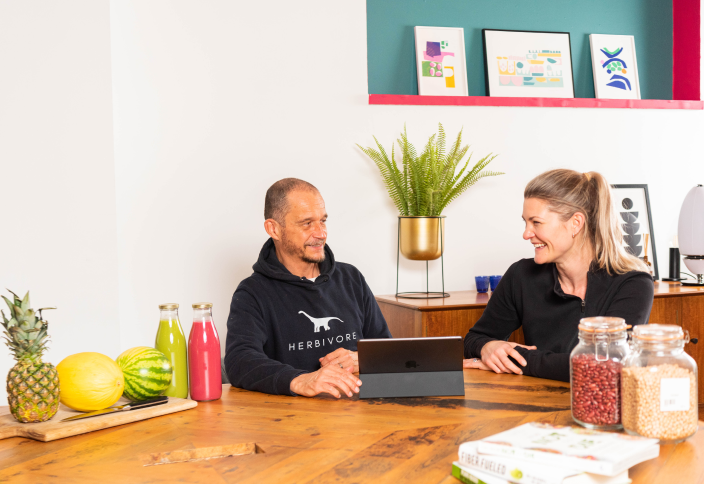Learn how to get back into exercise
Maybe you haven’t done regular exercise for a few months. Maybe it’s been a few years since you laced up the trainers. However long it has been, you now feel like you want to , or you should, do some exercise. Whatever your motivation, the approach you initially take to getting back into exercise will have a real bearing on whether or not your newfound enthusiasm develops into a solid habit or ebbs away like it did last time, not to return for several more months or years.
Here I have put together some straightforward advice on how to start and maintain a new exercise habit. It’s very much a “take it steady” sort of approach, which should give you lots of early small wins to keep you motivated, but it’s also grounded in some excellent research on building good habits.
When I talk about making and breaking habits in these blog posts I will often refer to the work of James Clear, author of the book, Atomic Habits. For me, it is the (no pun intended) clearest explanation of the effective behaviours that lead to lasting habit formation and cessation. I have taken the most appropriate sections of his work and applied it to a quest to start and maintain an exercise habit.
Make exercise bite-sized and keep repeating it
Doing an hour or even 30mins of exercise each day can seem daunting and that’s one reason why most people don’t do it. But what if your exercise session only lasts for 3 or 4 mins? It is likely that you would see that as achievable.
I have never been great at fitting in abdominal work (crunches, sit ups etc) into my exercise programme, but it is now something that I do 5 or 6 times a week because I only do a small amount. Generally this is 25 to 30 repetitions of 3 different exercises. It takes less than 5 minutes and means that I have strong abdominals these days compared to the past when I didn’t do any of this sort of exercise because I thought that the 15 to 30mins needed were too daunting.
Apply this to your wish to exercise more. Maybe you want to go running, but taking part in the Park Run means completing the full course of 5km. If you are unfit, that’s a really long way. Perhaps you could start by running around your local cricket or football pitch? You don’t even have to complete a full lap at first; you could jog for 20secs then walk for 20secs and repeat. Once you have finished a lap you can go home. You won’t be exhausted, you will be pleased that you have completed a lap, and you will be fresh enough to return the next day to do the same again, but maybe with less walking and more jogging.
Over days and weeks, completing this short session of exercise (and the rituals that go with it – putting on the kit, warming up, running, stretching, taking a shower afterwards) will solidify this running habit and, more importantly, will give you a strong feeling of identity as a runner. Once you have this identity, regularly going for a run will be second nature and you can then start to increase the length and variety of your running sessions.
State your intention, clearly
There is much talk about the effectiveness of goal setting. While goals are necessary they are not sufficient because they don’t say anything about the process that you have to go through to achieve them.
What can be much more effective is by stating what James Clear calls an implementation intention. In Atomic Habits he recalls research where exercise habits were tracked of people divided into 3 groups. The first group were asked to simply log their exercise over 2 weeks. The second group were also given some motivational material about the benefits of exercise for heart health. The third group also received the motivational materials, but were also asked to formulate a short plan as to when and where they would exercise in the following week. Each member of that group completed the following sentence, “during the next week I will partake in at least 20mins of vigorous exercise on [day] at [time] in [place].
In the first and second groups 35 to 38% of people exercised at least once a week, but 91% of the third group did so. This is a huge and meaningful difference and shows just how good exercise habits are solidified if you make a specific plan, stating the time and place of when you will do the exercise.
Summary
The daunting barriers to getting back into exercise can be overcome if you:
Start small and repeat regularly – 10 squats a day every day for a month
State you intentions specifically – I will do 10 squats every day in the back garden after work
At the end of that month the habit of exercising will have been set and you will have the identity of someone who exercises regularly. From there you can build the amount and variety of exercises that you do every week.
Contact me for support in building exercise habits
My personal training clients benefit from my experience in helping people to build a regular exercise habit.
Visit my Contact page to discuss how a package of personal training can help you become that regular exerciser and feel all of the benefits that come with it.





